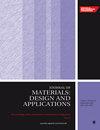Fabrication and control architecture of novel hybrid metal additive manufacturing incremental forming technology
IF 2.2
4区 材料科学
Q3 MATERIALS SCIENCE, MULTIDISCIPLINARY
Proceedings of the Institution of Mechanical Engineers, Part L: Journal of Materials: Design and Applications
Pub Date : 2024-07-23
DOI:10.1177/14644207241263977
引用次数: 0
Abstract
Hybrid manufacturing processes redefine production dynamics by harnessing the synergistic interplay between process mechanisms, energy sources, and tools to impact manufacturing quality, productivity, and sustainability significantly. Accordingly, this article focuses on hybrid additive manufacturing incremental forming, where additive manufacturing and incremental forming are integrated in a unified setup, driven by a single power source. This integration opens avenues for innovative component and production design, capitalizing on the strengths of both methods while mitigating drawbacks. The fabrication of the hybrid additive manufacturing incremental forming setup involves crucial components like a hybrid extrusion forming unit, supporting plates, hopper-barrel assembly, band heaters, solenoid setup, and a comprehensive control architecture. Addressing challenges, particularly overheating in the hopper, and feeding zone, ensures effective material transformation with the hybrid extrusion forming unit. The subsequent section provides analytical analysis and validation of the hybrid extrusion unit. This technology enhances the entire process and addresses issues related to metal additive manufacturing, such as porosity and material shrinkage. The maximum tensile force sustained in hybrid additive manufacturing incremental forming before fracture demonstrates a notable enhancement of about 20% from 670 N in additive manufacturing to 805 N in hybrid additive manufacturing incremental forming. It also removes micro-cracks, and voids, and improves the inter-layer bonding, as observed through scanning electron microscopy. The results highlight hybrid additive manufacturing incremental forming's superior enhancement of mechanical properties and surface quality compared to traditional additive manufacturing approaches.新型混合金属增材制造增量成形技术的制造和控制结构
混合制造工艺利用工艺机制、能源和工具之间的协同作用,重新定义了生产动态,对制造质量、生产率和可持续性产生了重大影响。因此,本文重点介绍混合增材制造增量成形,即在单一动力源的驱动下,将增材制造和增量成形集成在一个统一的装置中。这种集成为创新部件和生产设计开辟了道路,既充分利用了两种方法的优势,又减少了缺点。混合增材制造增量成型装置的制造涉及混合挤压成型单元、支撑板、料斗-料筒组件、带式加热器、电磁阀装置和综合控制架构等关键部件。应对挑战,特别是料斗和喂料区的过热问题,可确保混合挤压成型装置有效地进行材料转化。随后的章节将对混合挤压成型装置进行分析和验证。这项技术改进了整个工艺流程,并解决了与金属增材制造相关的问题,如气孔和材料收缩。在混合增材制造增量成形中,断裂前所承受的最大拉伸力从增材制造中的 670 N 显著提高到混合增材制造增量成形中的 805 N,提高了约 20%。通过扫描电子显微镜观察,它还消除了微裂纹和空隙,改善了层间结合。与传统的增材制造方法相比,混合增材制造增量成形能更好地提高机械性能和表面质量。
本文章由计算机程序翻译,如有差异,请以英文原文为准。
求助全文
约1分钟内获得全文
求助全文
来源期刊

CiteScore
4.70
自引率
8.30%
发文量
166
审稿时长
3 months
期刊介绍:
The Journal of Materials: Design and Applications covers the usage and design of materials for application in an engineering context. The materials covered include metals, ceramics, and composites, as well as engineering polymers.
"The Journal of Materials Design and Applications is dedicated to publishing papers of the highest quality, in a timely fashion, covering a variety of important areas in materials technology. The Journal''s publishers have a wealth of publishing expertise and ensure that authors are given exemplary service. Every attention is given to publishing the papers as quickly as possible. The Journal has an excellent international reputation, with a corresponding international Editorial Board from a large number of different materials areas and disciplines advising the Editor." Professor Bill Banks - University of Strathclyde, UK
This journal is a member of the Committee on Publication Ethics (COPE).
 求助内容:
求助内容: 应助结果提醒方式:
应助结果提醒方式:


